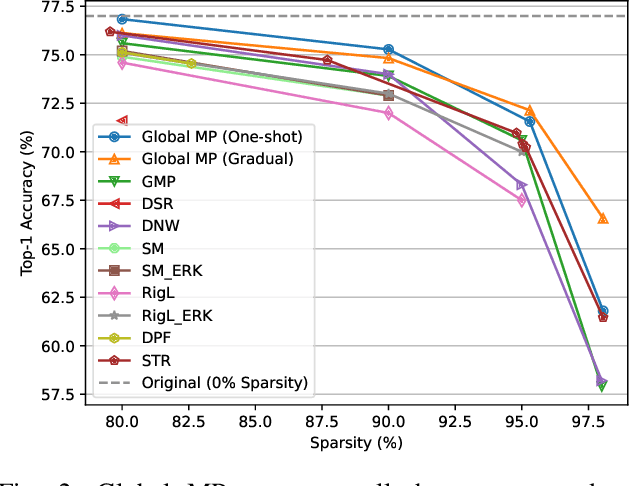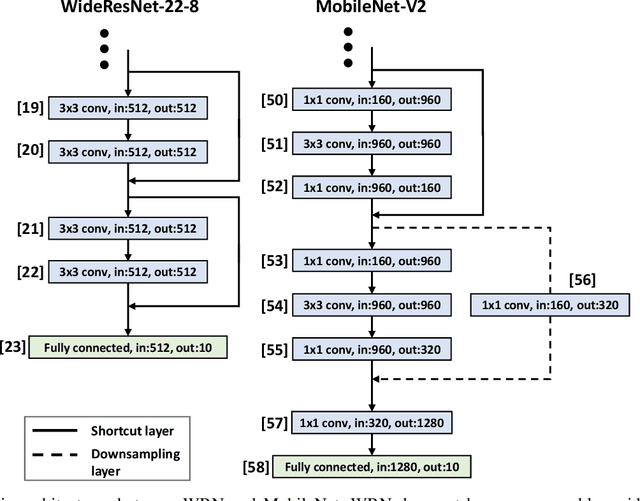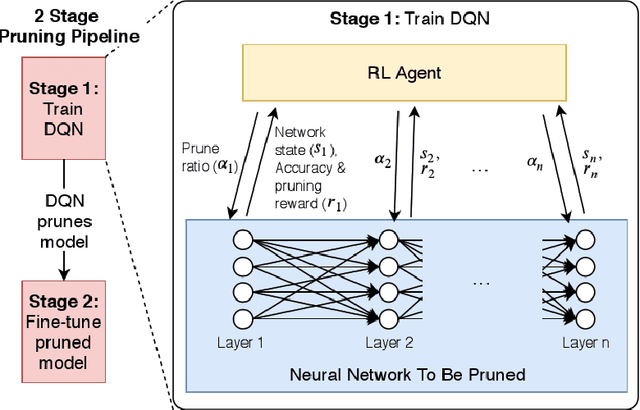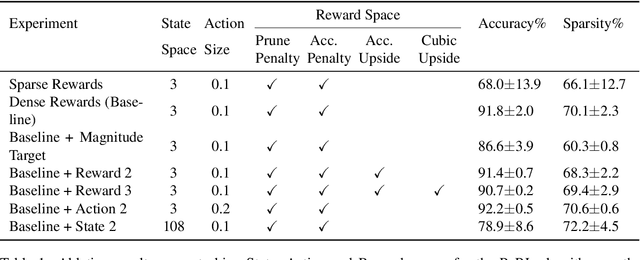Lin Jie
Is Complexity Required for Neural Network Pruning? A Case Study on Global Magnitude Pruning
Sep 29, 2022



Abstract:Pruning neural networks has become popular in the last decade when it was shown that a large number of weights can be safely removed from modern neural networks without compromising accuracy. Numerous pruning methods have been proposed since then, each claiming to be better than the previous. Many state-of-the-art (SOTA) techniques today rely on complex pruning methodologies utilizing importance scores, getting feedback through back-propagation or having heuristics-based pruning rules amongst others. We question this pattern of introducing complexity in order to achieve better pruning results. We benchmark these SOTA techniques against Global Magnitude Pruning (Global MP), a naive pruning baseline, to evaluate whether complexity is really needed to achieve higher performance. Global MP ranks weights in order of their magnitudes and prunes the smallest ones. Hence, in its vanilla form, it is one of the simplest pruning techniques. Surprisingly, we find that vanilla Global MP outperforms all the other SOTA techniques and achieves a new SOTA result. It also achieves good performance on FLOPs sparsification, which we find is enhanced, when pruning is conducted in a gradual fashion. We also find that Global MP is generalizable across tasks, datasets and models with superior performance. Moreover, a common issue that many pruning algorithms run into at high sparsity rates, namely, layer-collapse, can be easily fixed in Global MP by setting a minimum threshold of weights to be retained in each layer. Lastly, unlike many other SOTA techniques, Global MP does not require any additional algorithm specific hyper-parameters and is very straightforward to tune and implement. We showcase our findings on various models (WRN-28-8, ResNet-32, ResNet-50, MobileNet-V1 and FastGRNN) and multiple datasets (CIFAR-10, ImageNet and HAR-2). Code is available at https://github.com/manasgupta-1/GlobalMP.
Learning to Prune Deep Neural Networks via Reinforcement Learning
Jul 09, 2020



Abstract:This paper proposes PuRL - a deep reinforcement learning (RL) based algorithm for pruning neural networks. Unlike current RL based model compression approaches where feedback is given only at the end of each episode to the agent, PuRL provides rewards at every pruning step. This enables PuRL to achieve sparsity and accuracy comparable to current state-of-the-art methods, while having a much shorter training cycle. PuRL achieves more than 80% sparsity on the ResNet-50 model while retaining a Top-1 accuracy of 75.37% on the ImageNet dataset. Through our experiments we show that PuRL is also able to sparsify already efficient architectures like MobileNet-V2. In addition to performance characterisation experiments, we also provide a discussion and analysis of the various RL design choices that went into the tuning of the Markov Decision Process underlying PuRL. Lastly, we point out that PuRL is simple to use and can be easily adapted for various architectures.
 Add to Chrome
Add to Chrome Add to Firefox
Add to Firefox Add to Edge
Add to Edge